Volcanic craters are more than just remnants of ancient eruptions. They often house ecosystems that are as unique as they are fragile. These craters create isolated environments where rare species thrive, often undisturbed by the outside world. From lush forests to pristine lakes, the ecosystems within these craters offer a glimpse into nature’s resilience and adaptability. Here are some of the most intriguing volcanic craters that boast exceptional ecosystems.
Ngorongoro Crater, Tanzania
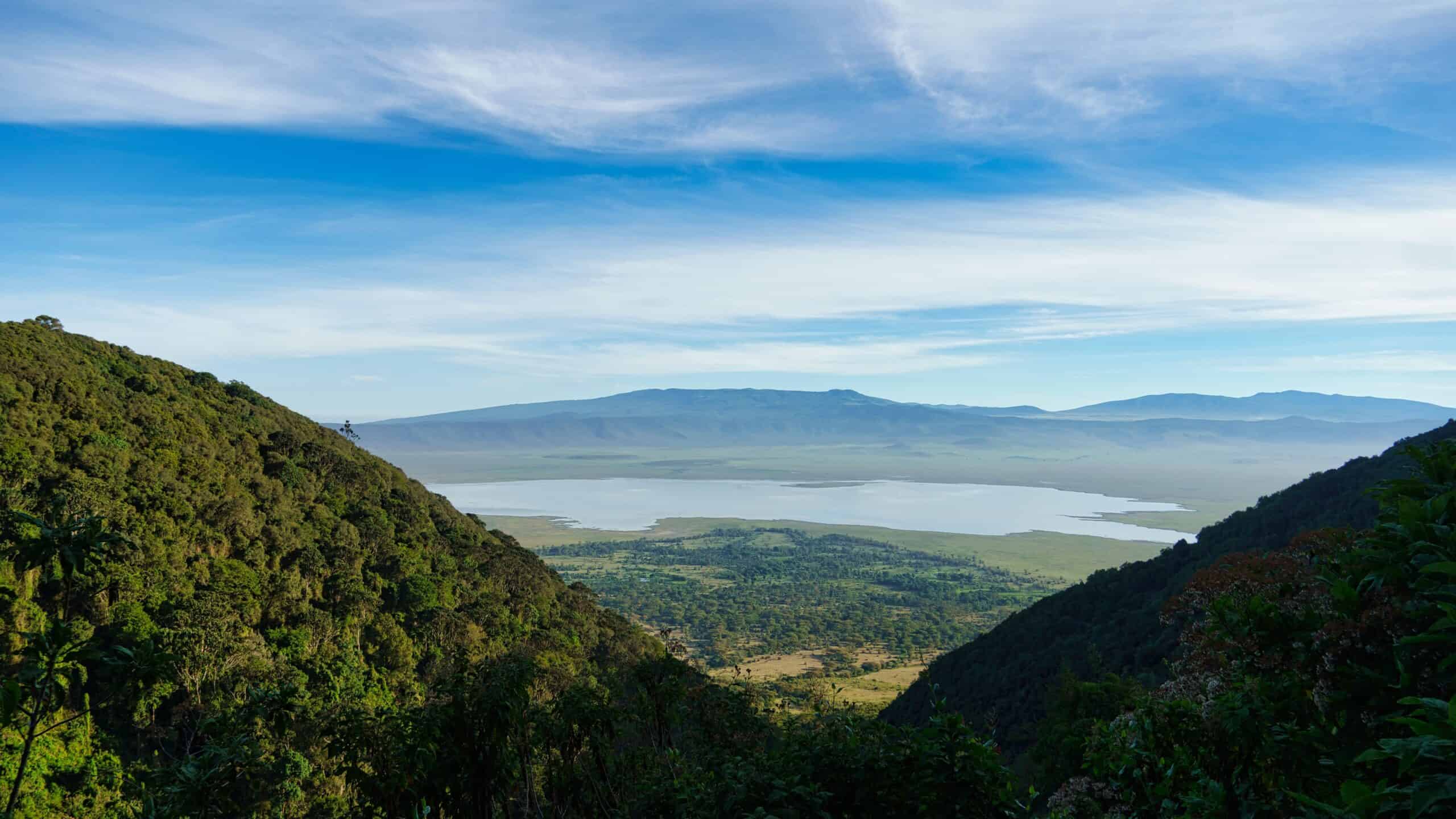
Ngorongoro Crater is a vast, unbroken caldera. Its floor spans over 100 square miles, creating a diverse habitat. Here, you find a thriving population of wildlife. Lions, elephants, and rhinos roam freely in this natural enclosure. The crater’s unique environment supports a rich variety of plant life, making it one of Africa’s most vibrant ecosystems.
Crater Lake, USA
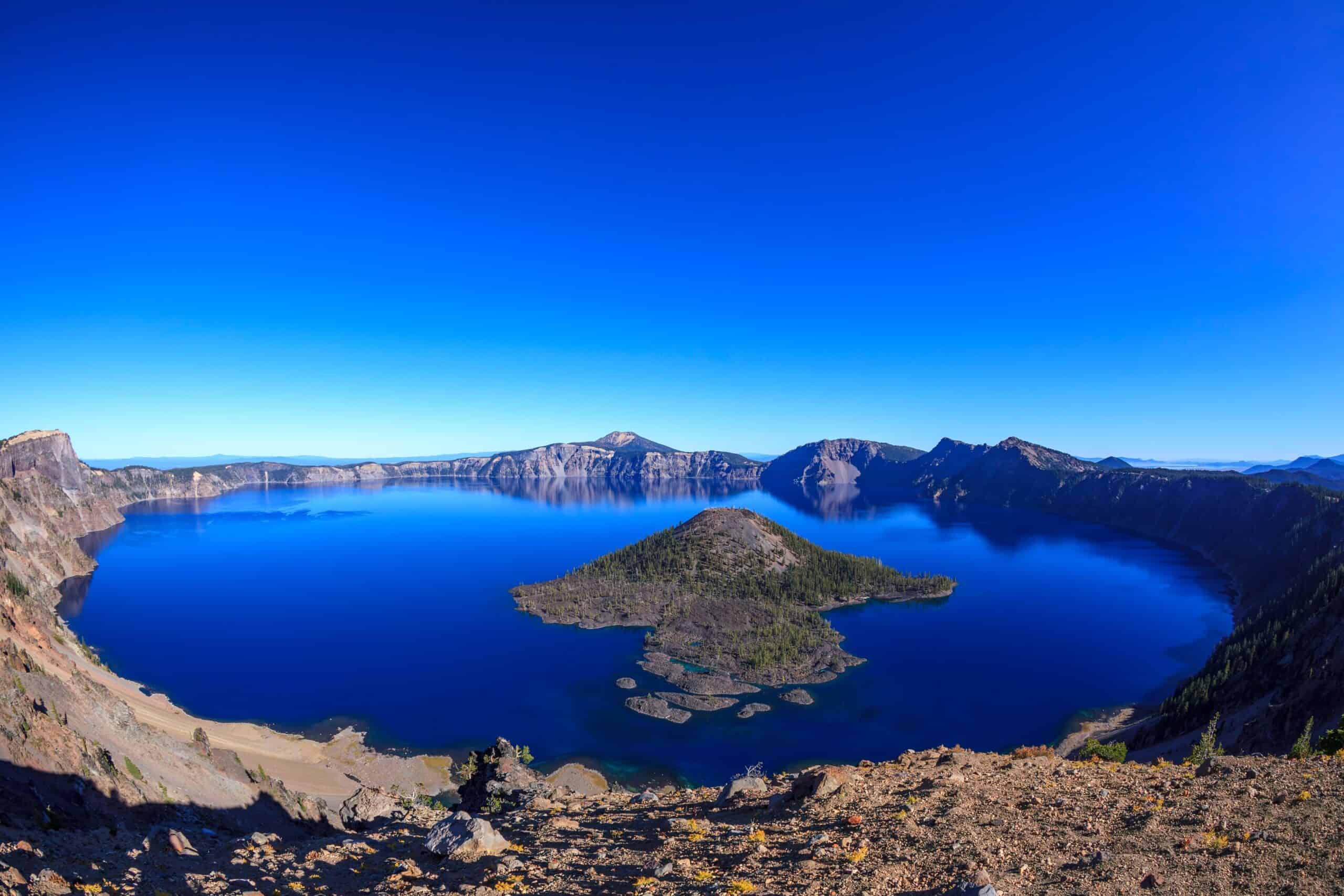
Crater Lake is the deepest lake in the United States. It formed around 7,700 years ago after Mount Mazama’s collapse. The lake’s water is incredibly pure, fed only by rain and snow. Its stunning blue color is unmatched. The surrounding old-growth forests provide a home to numerous species, making it a unique ecological haven.
Mount Rinjani, Indonesia
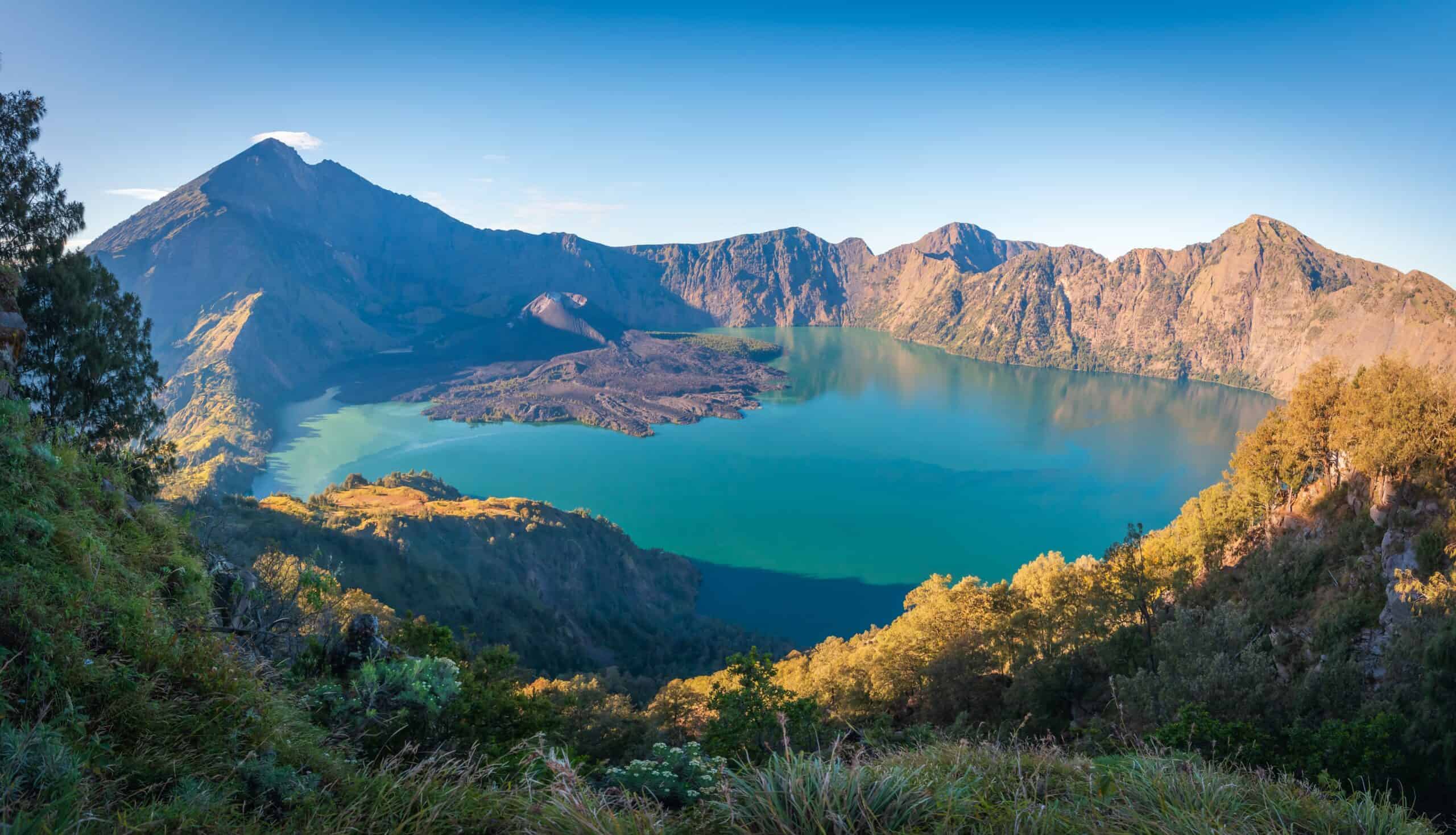
Mount Rinjani’s caldera hosts the serene Segara Anak Lake. This volcanic lake is sacred to the local people. Hot springs around the lake provide warmth, fostering a unique ecosystem. Fish species like the tilapia thrive in these warm waters. The caldera’s rim is lush with tropical forests, home to diverse wildlife and rare plants.
Mount Tambora, Indonesia
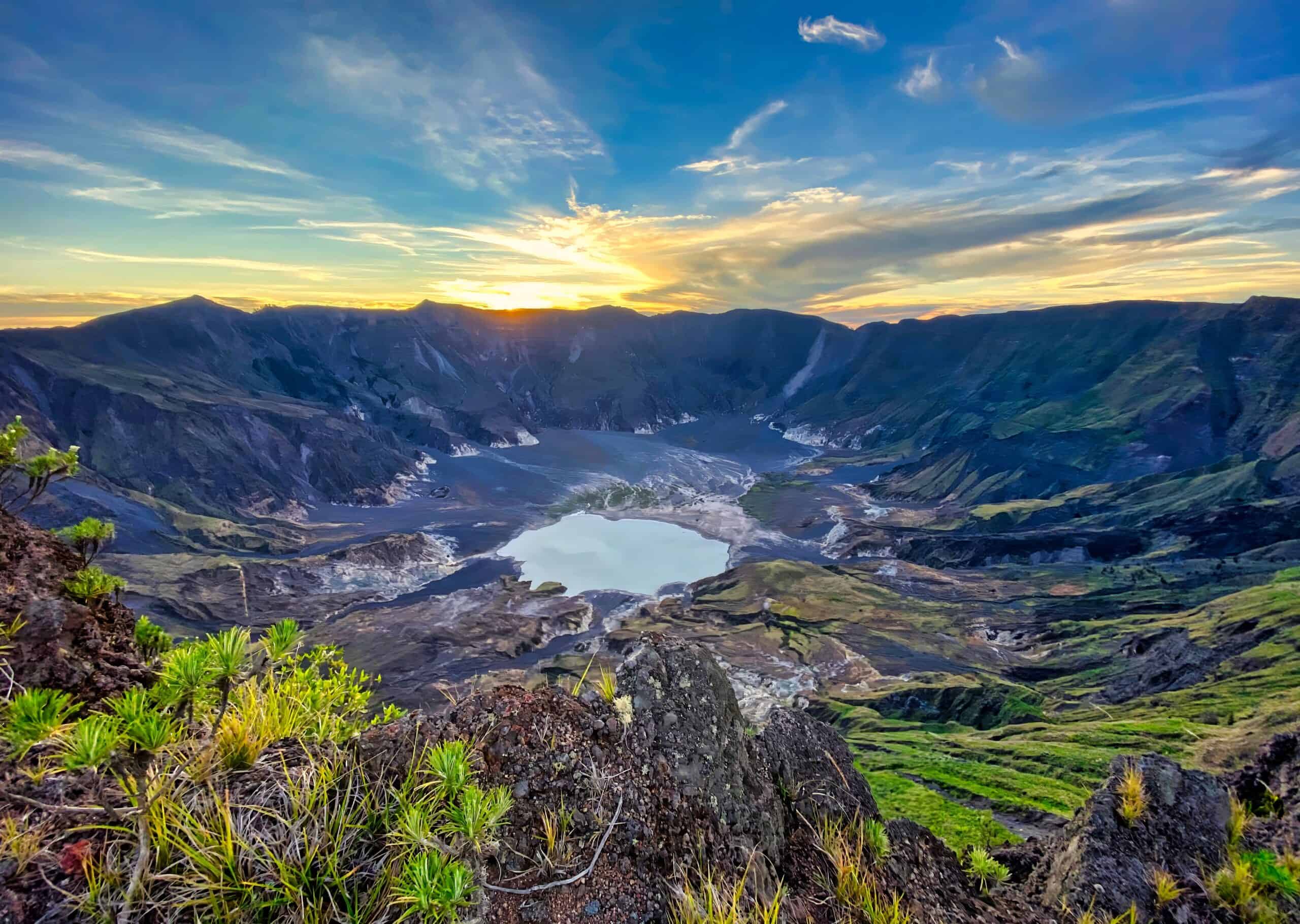
Mount Tambora’s eruption in 1815 was catastrophic, but its caldera now teems with life. The crater holds a small lake surrounded by dense forests. These forests are rich in biodiversity, with numerous plant and animal species. The caldera’s isolated environment has allowed many species to evolve uniquely. It’s a living testament to nature’s ability to recover and adapt.
Taal Volcano Crater, Philippines
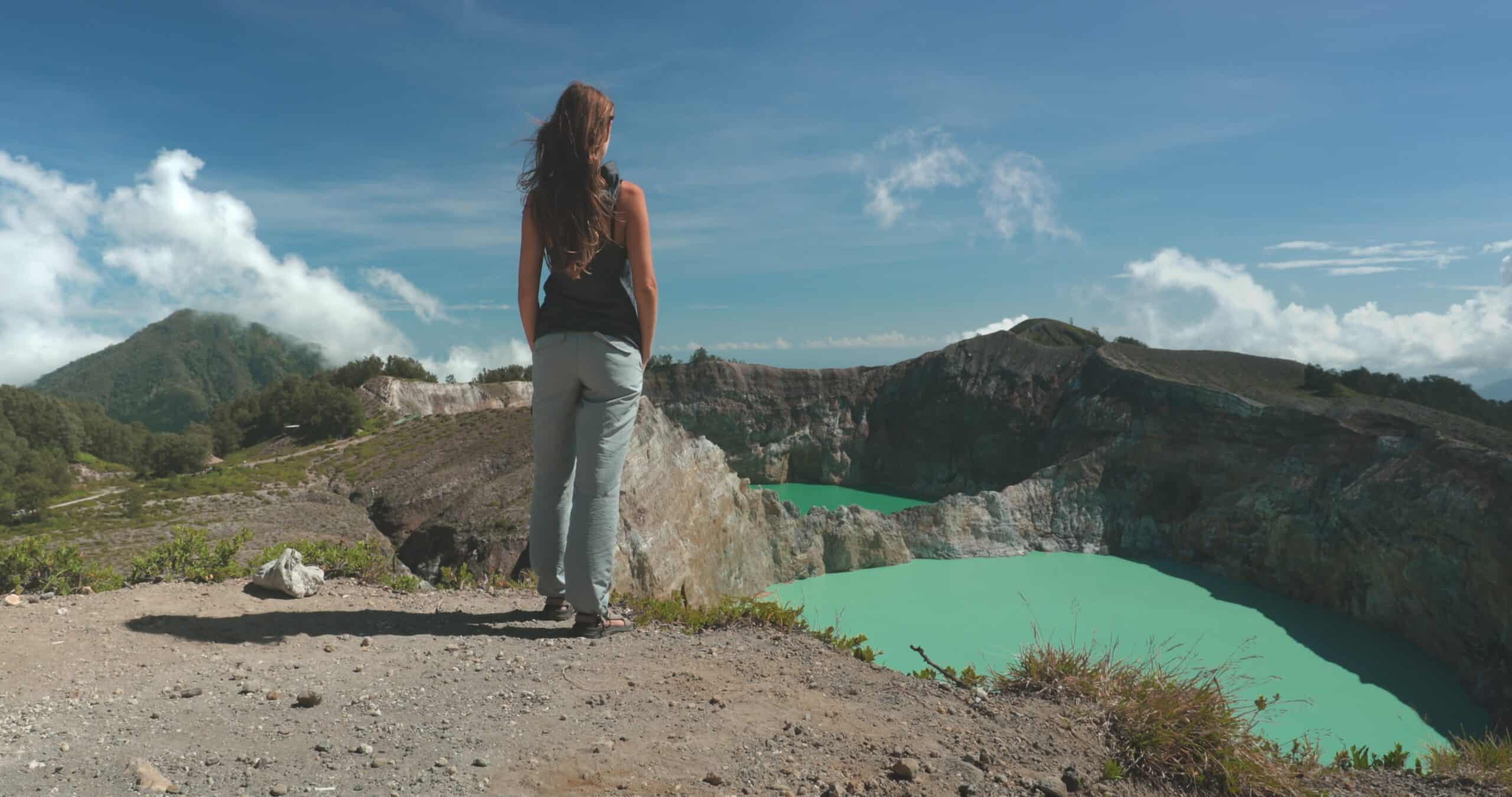
Taal Volcano’s crater is unique, featuring a lake within a lake. Inside the main crater lies a smaller lake, called Crater Lake. This inner lake is warm, with waters tinged by volcanic minerals. The crater is home to several fish species, including the endangered Tawilis. Surrounding the crater, dense vegetation thrives, supporting various bird species and other wildlife.
Kilauea Iki Crater, USA
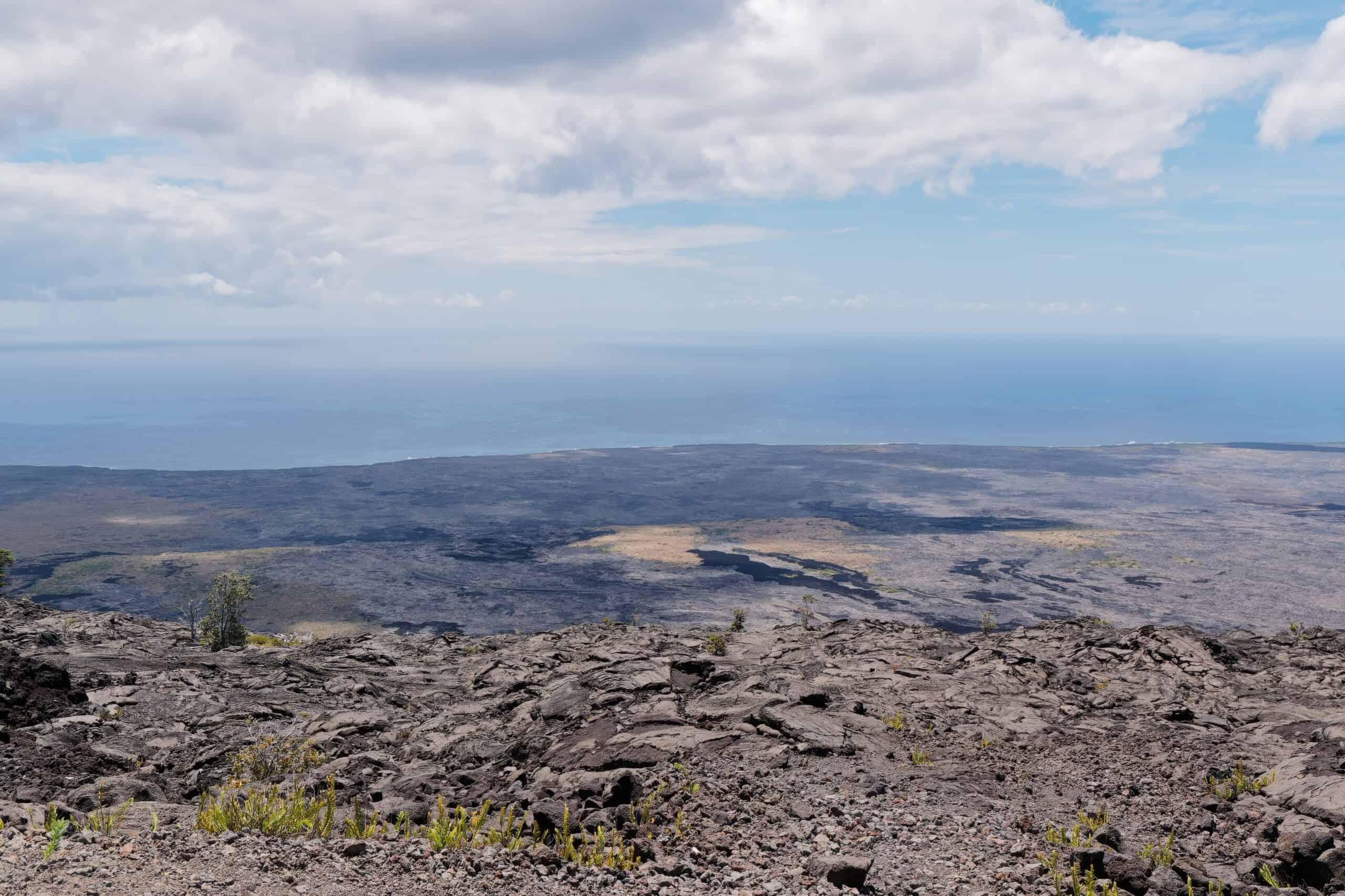
Kilauea Iki Crater in Hawaii is a testament to volcanic power. The crater was filled with lava during the 1959 eruption, creating a hardened lava lake. Over time, plant life began to reclaim the barren landscape. Today, ferns, shrubs, and trees are steadily transforming the crater floor. This gradual ecological recovery showcases nature’s resilience in the face of destruction.
Haleakalā Crater, USA
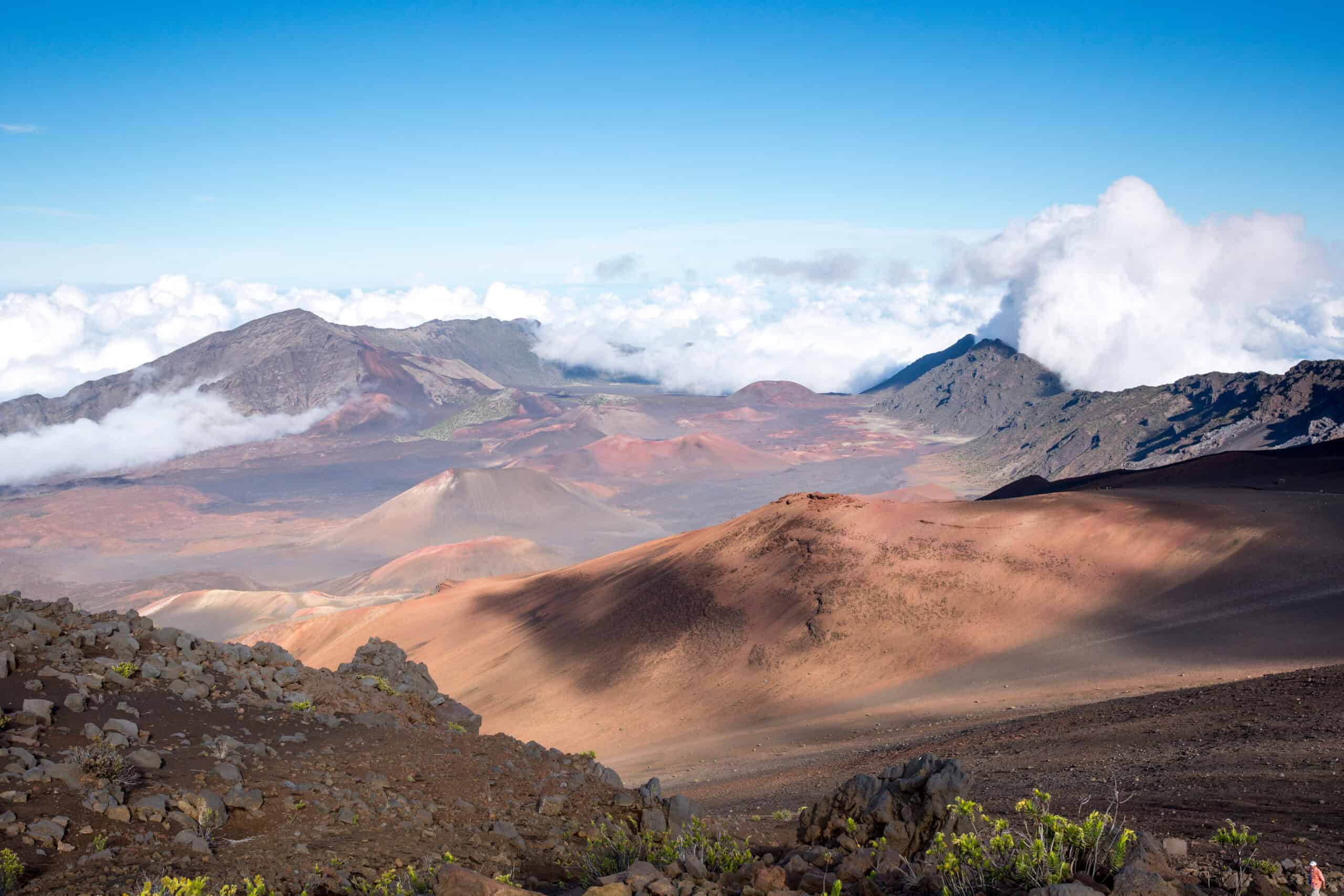
Haleakalā Crater on Maui is like another world. Its barren landscape is dotted with unique plant species, such as the silversword. This rare plant is found nowhere else on Earth. The crater’s high altitude and volcanic soil create a harsh environment. Yet, it supports a surprising diversity of life, including endemic insects and birds. The crater is a prime example of life’s adaptability in extreme conditions.
Rano Kau, Easter Island
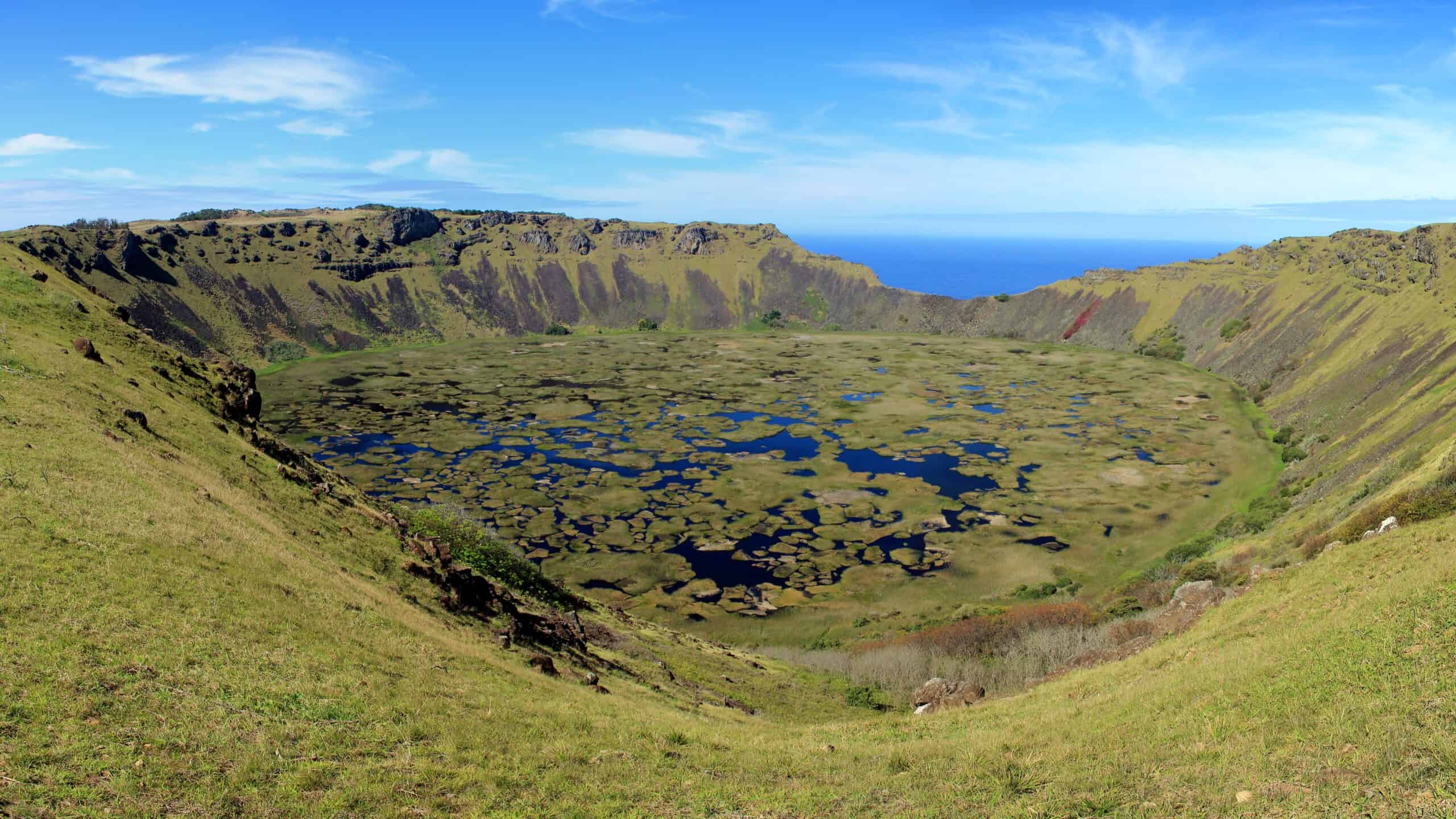
Rano Kau Crater is a lush oasis on the otherwise barren Easter Island. Its steep walls enclose a freshwater lake, fed by rainfall. The crater’s microclimate allows a rich variety of plant species to thrive. Among these are plants that are found nowhere else on the island. The crater is also a sanctuary for bird species, offering a rare glimpse into the island’s original ecosystems.
Okama Crater, Japan
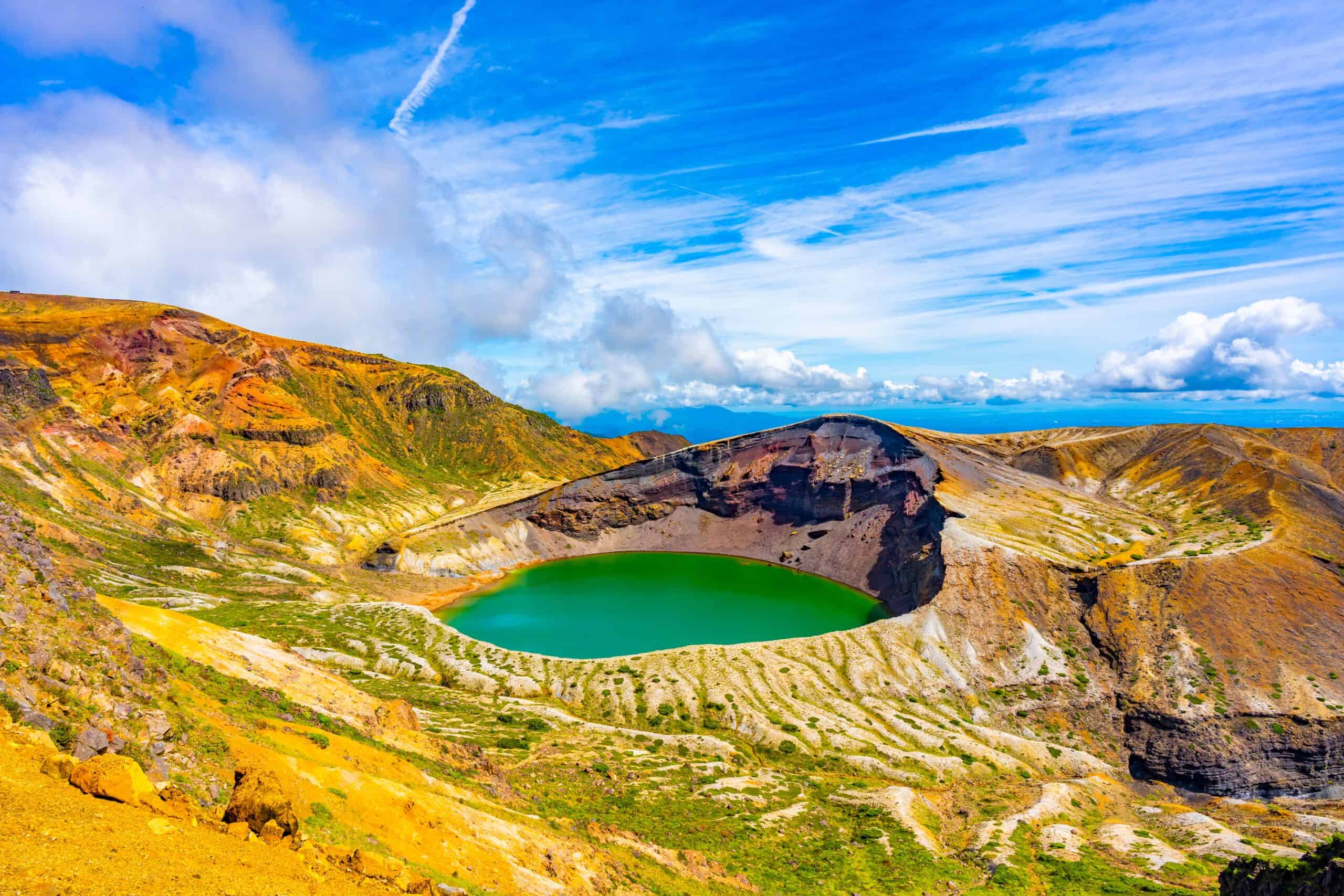
Okama Crater, also known as the “Five Color Pond,” is famous for its stunning, emerald-green lake. This crater lake changes color depending on the weather, creating a mesmerizing display. It sits atop Mount Zao, surrounded by rugged volcanic terrain. Despite the harsh conditions, the crater supports a variety of hardy plant species. These plants cling to the rocky slopes, creating a stark yet beautiful landscape. The unique color of the lake and the surrounding flora make Okama Crater a visually striking natural wonder.
Mount Pinatubo Crater, Philippines
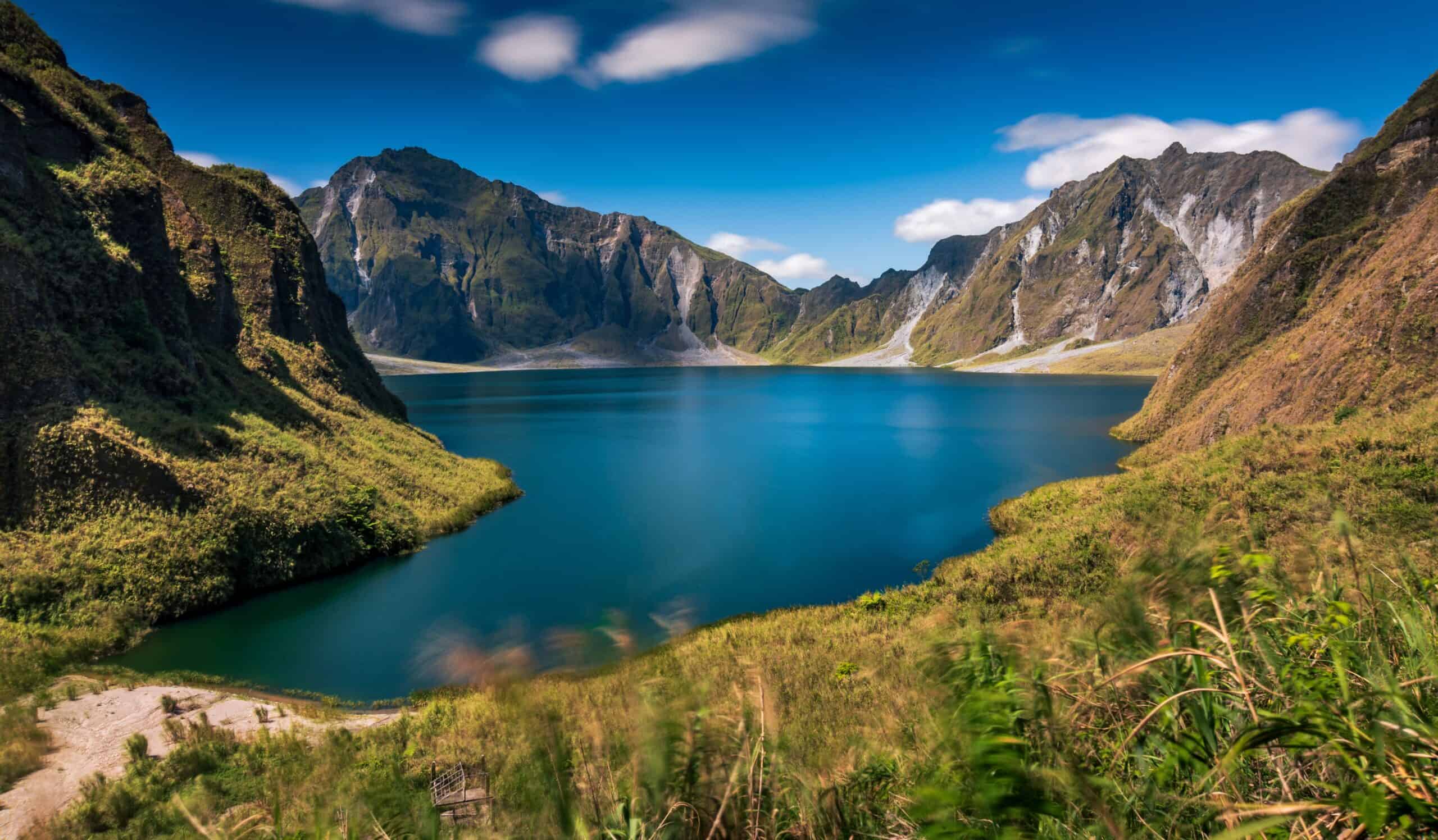
Mount Pinatubo’s 1991 eruption was one of the most powerful in recent history. The eruption left behind a massive caldera that has since filled with water, creating a deep, tranquil lake. The lake’s turquoise waters are surrounded by steep, ash-covered cliffs, creating a dramatic landscape. Despite the acidic nature of the lake, life has started to return to the area. Hardy plants and shrubs have begun to colonize the slopes, signaling the slow but steady recovery of this once-devastated environment.
Askja Crater, Iceland
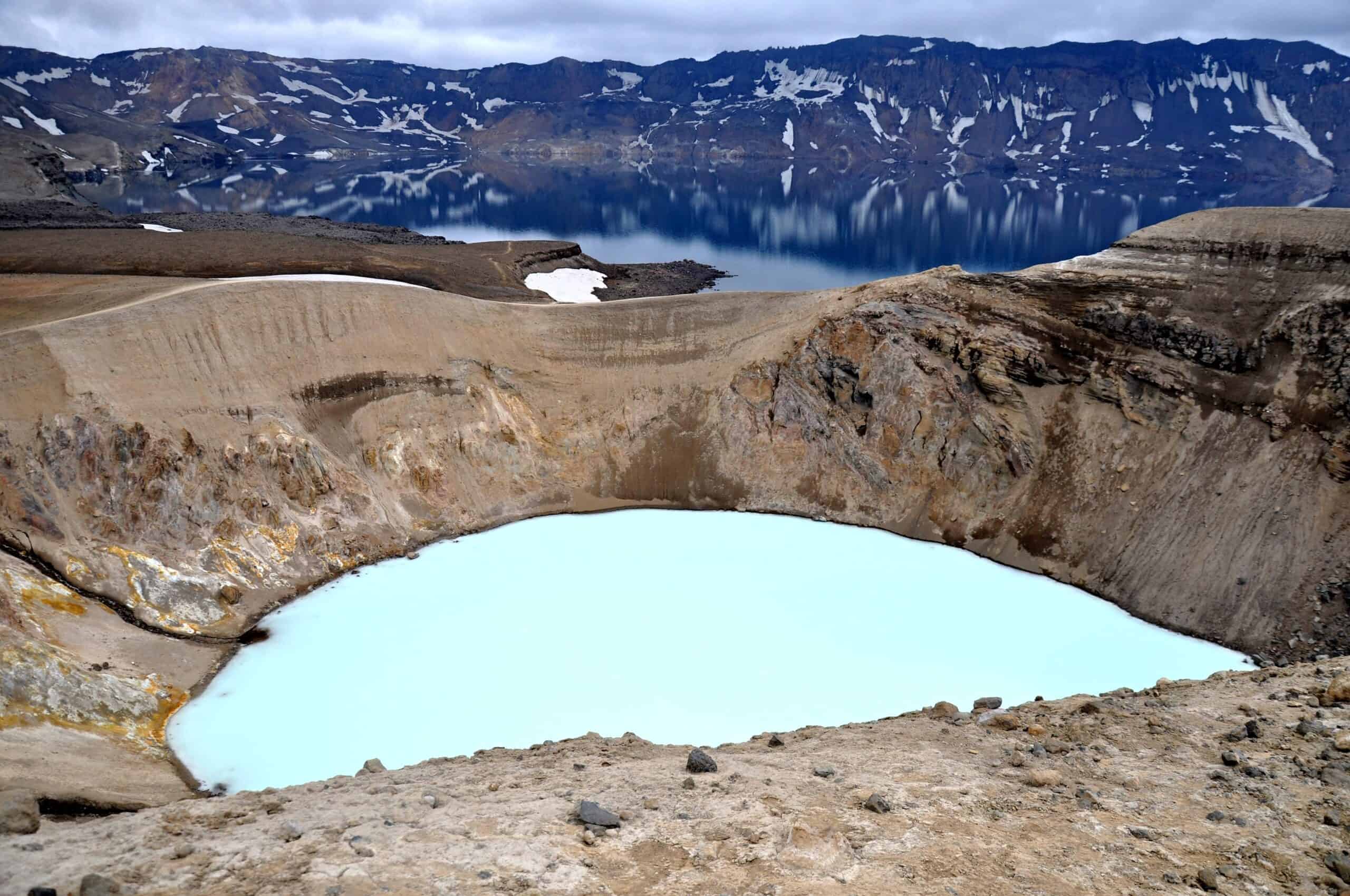
Askja Crater, located in the remote highlands of Iceland, is a large caldera filled with two distinct lakes. The larger lake, Öskjuvatn, is deep and cold, while the smaller Viti Lake is warm and geothermally heated. The barren, lunar-like landscape surrounding the crater is a result of past eruptions. Despite its desolate appearance, the crater is home to hardy mosses and lichens that survive in the harsh conditions. The contrasting lakes and the unique flora make Askja Crater a place of stark beauty and scientific interest.
Lake Nyos, Cameroon
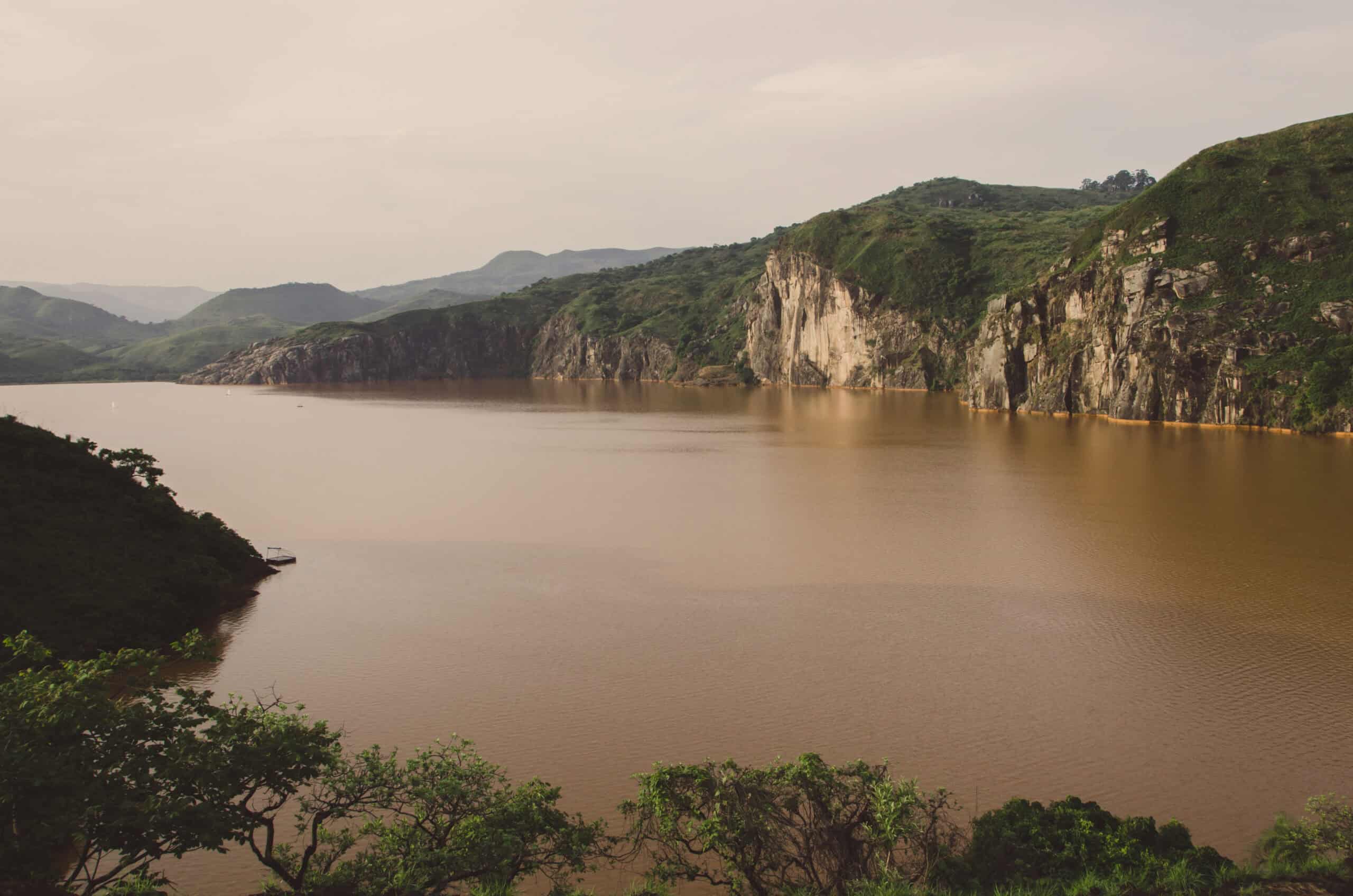
Lake Nyos is a crater lake in Cameroon, known for its deadly limnic eruption in 1986. The lake sits atop a pocket of magma, which releases carbon dioxide into the water. This gas occasionally erupts, causing the lake to release deadly clouds of CO2. Despite this danger, the lake is surrounded by lush vegetation. The fertile volcanic soil supports a rich array of plant life, creating a green oasis in the surrounding landscape. The contrast between the serene appearance of the lake and its hidden dangers makes Lake Nyos a fascinating study in volcanic activity.
Quilotoa Crater, Ecuador
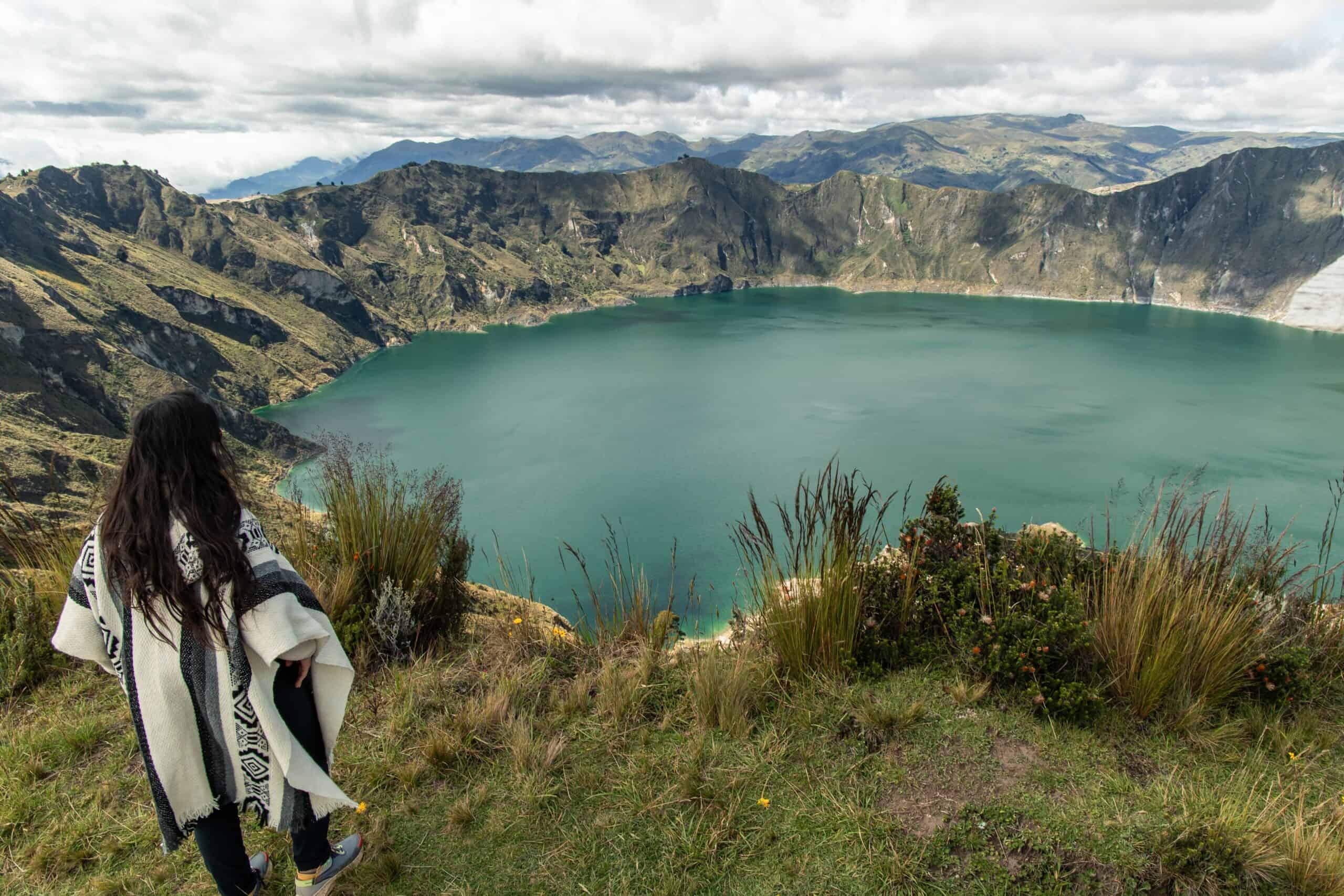
Quilotoa is a water-filled caldera in the Ecuadorian Andes. The crater’s lake is famous for its vibrant turquoise color, which is due to dissolved minerals in the water. The caldera is surrounded by steep cliffs, covered in high-altitude vegetation. These plants are well-adapted to the cold, windy conditions of the Andean environment. The lake itself is relatively acidic, yet it supports a unique ecosystem of microorganisms. Quilotoa’s striking landscape and its adaptation to the high-altitude environment make it a popular destination for hikers and nature enthusiasts.
Deriba Crater, Sudan
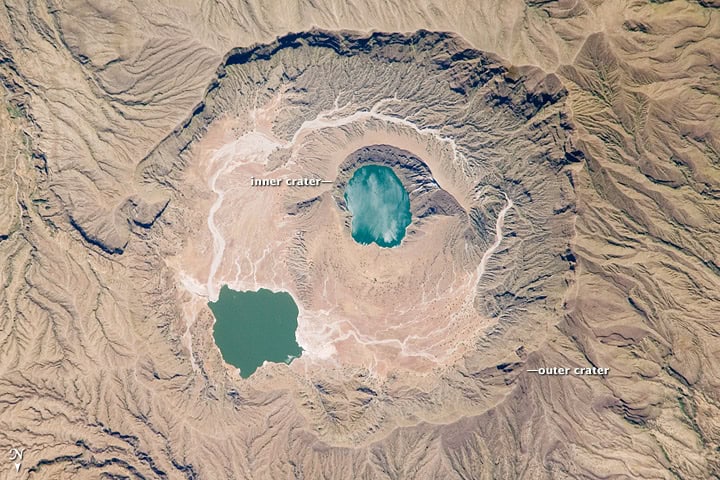
Deriba Crater is located in the Jebel Marra volcanic massif in Sudan. The crater is the highest point in Sudan, with a deep, steep-walled caldera that holds two small lakes. The lakes are surrounded by volcanic rock and sparse vegetation, creating a stark but beautiful landscape. The high altitude and isolation of the crater have allowed a unique ecosystem to develop. Endemic plant species thrive in the rocky terrain, and the lakes support a variety of aquatic life. Deriba Crater’s remote location and unique ecosystem make it one of Sudan’s most intriguing natural features.
Caldeira do Faial, Azores, Portugal
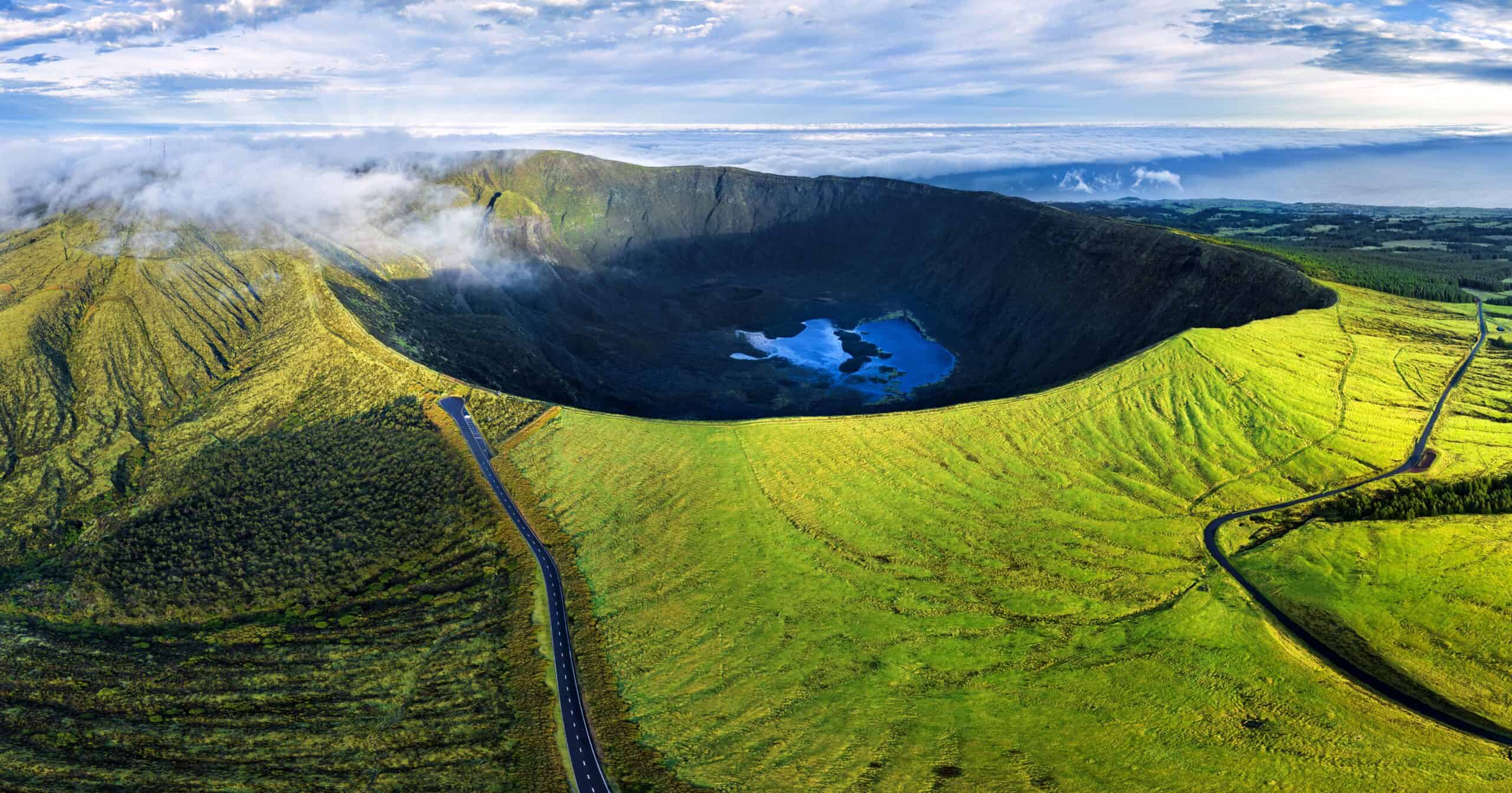
Caldeira do Faial is a large volcanic crater on the island of Faial in the Azores. The crater is covered in dense, lush vegetation, creating a green oasis in the middle of the island. The floor of the crater is home to a variety of plant species, including endemic ferns and mosses. The steep walls of the caldera are lined with thick forests, providing a habitat for birds and other wildlife. The crater’s vibrant ecosystem and its scenic beauty make it a popular destination for hikers and nature lovers visiting the Azores.
This article originally appeared on Rarest.org.
More from Rarest.org
19 Marine Mammals Rebounding Thanks to Conservation Laws
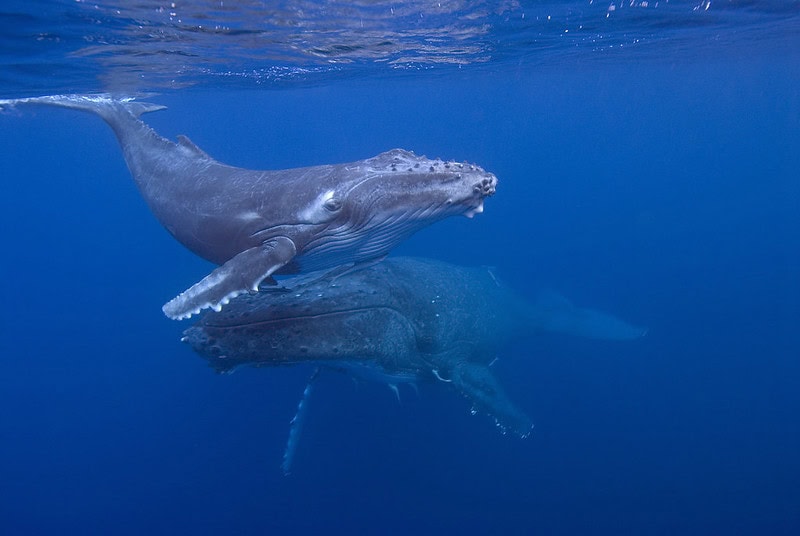
Efforts to protect marine life have led to remarkable comebacks for several species once on the brink of extinction. Read More.
18 Secret Caves Hidden Beneath Major Cities
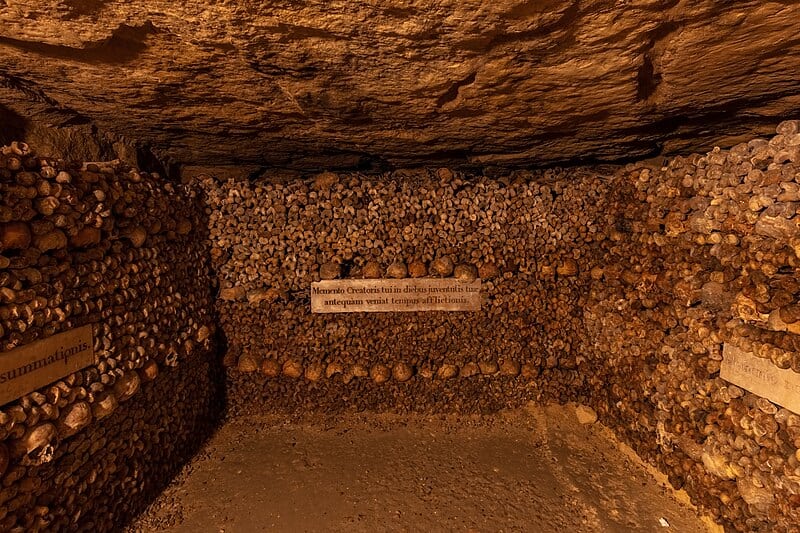
Beneath the world’s major cities lie hidden caves and underground wonders that few people know about. Read More.
1940 Jefferson Nickel Value Guide

Buffalo nickels were discontinued in 1938, and 5-cent Jefferson nickels were introduced. The bust of former American President Thomas Jefferson that appears on the coin’s obverse inspired their moniker. Read More.
